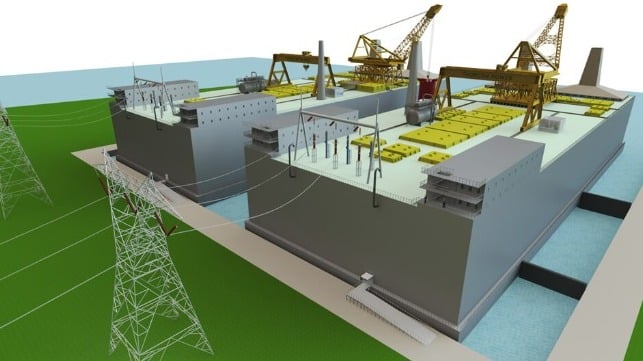BV Joins ThorCon Project to Certify Molten Salt Nuclear Power Barge

Bureau Veritas is joining an effort to develop and introduce possibly the first commercial application of a molten salt nuclear reactor. It is the next step in a project agreed to by Washington state-based ThorCon and Indonesia’s power and research innovation authorities. The plan calls for the development of a 500 MW power barge using the MSR technology as the first step to developing a reliable supply of 3 GW of power for Indonesia, which could also become the stepping stone to MSR nuclear-powered ships.
ThorCon is a molten salt fission reactor with the company’s concept being to place the reactor in a hull of barges, built in a shipyard, towed to a shallow water site, and ballasted to the seabed. The reactor would be connected to the existing power grid.
The company explains that no new technology is required as ThorCon is a straightforward scale-up of the successful United States Oak Ridge National Laboratory Molten Salt Reactor Experiment. They report that a full-scale 500 MW ThorCon prototype can be operating under test within four years. After proving the plant safely handles multiple potential failures and problems, commercial power plant production would begin.
“Our role is to assess and address risks to ensure such technologies can be deployed with the highest safety standards,” said Laurent Leblanc, Senior Vice President Technical & Operations for Bureau Veritas Marine & Offshore. “This project is very exciting as it can be a stepping stone to other applications such as the generation of hydrogen offshore and even nuclear ship propulsion."
BV has been selected to support ThorCon through the Technology Qualification process, both for the nuclear reactor itself and for its encapsulation (enclosed safe compartmentalization allowing the replacement of depleted fuel) and integration with the hull systems. Experts from Bureau Veritas’ Nuclear Certification Department and the Marine & Offshore Division will collaborate throughout the process. A key area of work will be to identify the applicable standards, codes and Class Rules, potential gaps with those currently available and the development if needed of new guidance notes and rules.
The scope of the agreement also includes the potential development and deployment phases once the Technology Qualification is completed. At this stage, it is anticipated that the Technology Qualification process will take a minimum of three years and if successful, the deployment phase would require an additional two years.
ThorCon has also entered into discussion with the Indonesian province of Bangka-Belitung, the State Electricity Company PLN, and the Nuclear Energy Regulatory Agency BAPETEN regarding potential sites for the demonstration and the final installation of a 500MW power plant. In July, the companies agreed with Indonesia’s BRIN (National Research and Innovation Agency) to jointly develop and build an experimental nuclear power plant using the MSR technology in a project estimated to cost as much as $1 billion. ThorCon Power will raise the money privately to fund the project once it receives legal certainty from the Indonesian government.

that matters most
Get the latest maritime news delivered to your inbox daily.
BAPETEN will issue an experimental nuclear power plant operating permit to the project. The goal is to have the commercial power supply available by 2030.
South Korea’s Samsung Heavy Industries is also working with Seaborg, a Danish start-up, to develop another version of a floating nuclear power plant barge using Compact Molten Salt Reactor technology. Their goal was to create an 800 MW model of the floating reactor power plant by 2023. The companies will conduct classification certification and develop commercial marketing plans for their version of the nuclear power barge.
